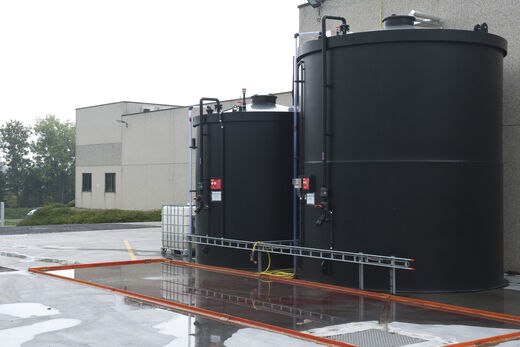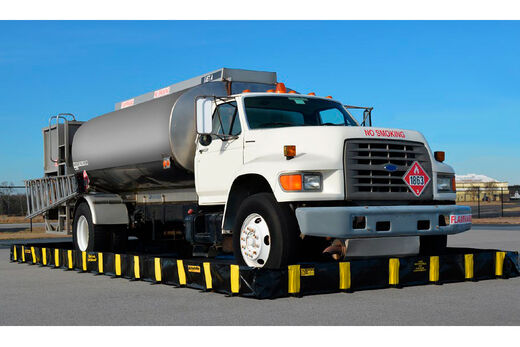unloading bay guidelines

Strict rules apply to filling a tanker truck: it must be placed in a liquid-proof area, also known as an unloading bay. To catch any leaks, raised edges or a ramp can be used. Moreover, it is possible to share one unloading bay for filling several tanks.
Unloading bay vary depending on the specific situation. The auditor follows the prescribed guidelines, but can apply variations based on risk analysis, depending on the individual customer.
In the event of a spill, this should be removed by an authorised collector, or if possible, processed in a water treatment plant. This contributes to safe and environmentally conscious handling of potential incidents.
Conditions unloading bay
- Permanent fixture
- Can support the weight of a truck
- Liquid-proof
- Spilled liquids must not spread

New upcoming VLAREM II changes
There are a number of upcoming legislative changes related to unloading bay. These changes are designed to improve safety and flexibility in various situations. Some of the proposed changes include:
- Permanent marking for partial tankers: From now on, tankers that are not fully ensiled must be permanently marked. This helps in more efficient identification and awareness of potential risks.
- Increased resistance: A new requirement states that liquid-tight facilities must be able to withstand the specific liquids loaded into them. This strengthens protection and prevents unintentional leaks.
- Flexibility in permits: A notable change is the possibility to deviate in permits from the obligation to have a liquid-tight filling zone for occasional loading operations. This derogation is based on a site-specific risk analysis of the loading activities. This opens the door for exceptions in situations such as swimming pools and farms, where the need for a permanent filling zone may not be as relevant.
- Alternative solutions: Moreover, flexible drip trays and eco-barriers are also allowed after a thorough risk analysis. This means that not all sites have to follow the same strict requirements. For example, a swimming pool may have different needs from a chemical plant, and these modifications take this into account.
These upcoming legislative changes aim to strike a better balance between safety and practicality in different contexts, allowing companies and organisations to operate more effectively within applicable regulations.
Want to know more about our unloading bay?
Leave your details and get all the information you need.